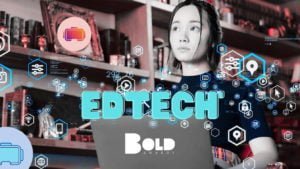Managing change within an organization is never easy since a company is essentially formed by people, and people are not usually easy to change because of cultural factors (the culture of the country, the industry, the company itself, and so on).
The ennomotive platform hosts open innovation challenges that are based around engineering projects. Despite the proven benefits of innovation crowdsourcing (or crowdsourced open-innovation), it can still be difficult to introduce it to and integrate it in a traditional engineering company. We have found four barriers that are regularly put in front of us.
1. The first barrier appears when scientists and engineers are reluctant to accept that there is more talent outside the walls of their companies. People will have even more reservations if the crowdsourcing initiative targets a core technology competence in the company.
In order to overcome this barrier, our experience tells us that a good option would be to first target a non-core technology competence. However, if there is a disruptive technology in the market that creates a new window of opportunity, the crowdsourcing method could be accepted more easily.
From our experience, ‘in-house’ experts need not feel insecure if they can adjust their role to assess a wider range of ideas than they would have come up with by themselves. Their value is a bit further down the innovation pipeline: they are not the people who need to come up with the ideas, they now assess new opportunities from a technical standpoint.
2. The second barrier is related to the visibility associated to the crowdsourcing of a company challenge. In order to screen a crowd of people, you definitely have to disclaim what the company needs or wants, which can reveal strategic information to your competitors.
People tend to make this problem bigger than it actually is (since many challenges are already publicly known), which usually leads to a tedious process of internal validations, especially in companies that have a decision-making culture based on broad consensus.
For this reason, many organizations dare to try crowdsourcing only with broadly known but ‘impossible-to-solve’ challenges. Those challenges represent old problems or needs that, after many attempts, were put in the drawer forever marked as ‘too difficult’. Again, this may not be the best way to prove that crowdsourcing works because, unless you are allowed to reformulate it, the original challenge might be too complex to be solved.
Nevertheless, there are sometimes open-minded people in the organization (e.g. the innovation department) that have the ability and autonomy to drive decisions to overcome this visibility issue.
3. A third barrier can be aversion to a risky investment, in this case when trying a new innovation model. Companies may perceive a need to increase the innovation budget to test an approach that has never been done before.
To overcome this barrier, it would be advisable to find flexible formulae to make the company’s decision to test crowdsourcing as easy as possible (lower the risk, find external funding, deliver fast results, etc.).
4. Finally, a fourth barrier appears when crowdsourcing is considered to be an alternative to traditional outsourcing.
As defined by Jeff Howe, crowdsourcing is a sourcing model in which individuals or organizations obtain ideas from relatively open and often rapidly-evolving group of external people. However, this does not automatically translate into an innovation project outsourced to a group of internet users. On the contrary, it means that a group of people get involved in a project still owned and managed by the company, like the projects run by the R&D departments.
People from the crowd cannot be considered or treated as suppliers or the experience will be very frustrating for both parties. Crowdsourcing must be thought of as a helping tool for the organization, not a way to outsource projects.
Therefore, crowdsourcing does not quite fit in companies that prefer to outsource projects completely, passing on all the responsibility. Crowdsourcing is a good match for organizations that undertake projects (and keep the responsibility) but want ‘fresh’ insights to become better, faster and more cost-efficient.
Introducing innovation crowdsourcing to Codelco
Let us share a real story about barriers we encountered and how we overcame them when we introduced crowdsourcing in a mining company.
ennomotive, our crowdsourcing company focused on innovation engineering, began in 2015 in Spain. Two years later, we had the opportunity to start our expansion in Chile, which has a traditional market though appeared willing to move towards innovation.
We arrived in the South American country in February 2017, and in April we met the Innovation Director of Codelco, the Chilean state-owned copper mining company. Lucky for us, he was the right open-minded, innovation-driven person who opened doors for testing crowdsourcing in the company.
A few weeks later, he introduced us to Codelco Tech, Codelco’s R&D subsidiary, which had to make the final decision on whether or not to incorporate our crowdsourcing model. Our approach was to make an attractive proposal to work with a first-time success fee and, at the same time, presented them the opportunity to obtain governmental funding for innovation initiatives.
By the month of October, we had already received the funding, the approval from Codelco Tech, and launched a relevant mining challenge with a good business-case for the company. In six weeks, we had the first positive results.
After testing our crowdsourcing model, the company says it is 40% more cost-efficient and delivers solutions 3 times faster than traditional innovation methods with its internal scientists and external support from universities, consultants and other stakeholders
As a result, Codelco Tech decided to embark on a second crowdsourcing project to find applications for a new graphene-copper nanocomposite material. This challenge has also been successfully completed.
It could be fair to say that any orgnization using open innovation for the first time is taking a bold step. Though through the 2019 BOLD Awards we are really looking for the very boldest individuals, projects and organizations in 12 categories from advertising and crowdfunding to robots and the space frontier. The closing date for entries is February 8, after which the power of the crowd – a public vote – will reduce the field to five entries per category. A international panel of judges will then get involved to determine the winners, who will receive their awards at a ceremony in Venice, Italy on April 5. Don’t delay, enter today!







